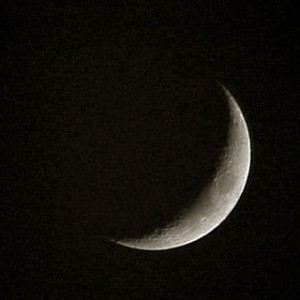Oct 11 2008
Moonsighting
This recent article in the Ottawa Citizen describes some of the controversy surrounding the astronomical moment at which the month of Ramadan is over. This, of course, is signaled by the appearance of the new crescent moon. The question, however, is that of exactly where this first lunar crescent must be sighted — from one’s own city or from Mecca. Furthermore, does the latter option invalidate the primacy of aeons of naked-eye viewing of the new lunar crescent in Islam?
This is ultimately about the question of religious authority, and as such, it summons to mind other similar challenges posed by the matter of first lunar visibility. In ancient Judaism, for example, the new month was once proclaimed first based upon a system in which an initial viewer of the new crescent would light a signal-fire on a mountain or hill-top to notify the next viewer, who would then light another signal-fire, and so on. This practice was disrupted by the deliberate lighting of signal-fires at the wrong time by the Samaritans of the first century. This practice was soon replaced by a system involving witnesses of the new crescent, who would then be carefully interrogated by Jewish authorities. Upon establishing the credibility of given witnesses, the new month would be proclaimed. This matter was, of course, crucial to the timing of important religious festivals such as Passover and the New Year. Later, the fixed, calculated Jewish calendar would come to replace visual observation of the moon for religious purposes — a critical transition within Judaism, to be sure, and one which had its origins in the political nature of calendrics and its reliance upon astronomical viewing.
It is, perhaps, notable, that the small community of remaining Karaites continues to rely on direct visual observation of the lunar crescent, having never adopted the beliefs, interpretations and rituals of Rabbinic Judaism.

